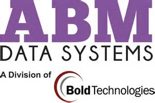 IntraWorks conceptualizes, designs, installs, and services Command and Control Centers also known as Situation rooms, Emergency Dispatch centers, Emergency response centers, Emergency operations centers, surveillance rooms, alarm monitoring centers, or control rooms. IntraWorks installs these systems for a wide variety of clients to include: government facilities, laboratories, manufacturing facilities, infrastructure facilities, transportation systems, city/ state / county / federal / tribal governments, hospitals, high rise buildings, auditoriums, casinos, education facilities, correctional institutions and much more.
IntraWorks conceptualizes, designs, installs, and services Command and Control Centers also known as Situation rooms, Emergency Dispatch centers, Emergency response centers, Emergency operations centers, surveillance rooms, alarm monitoring centers, or control rooms. IntraWorks installs these systems for a wide variety of clients to include: government facilities, laboratories, manufacturing facilities, infrastructure facilities, transportation systems, city/ state / county / federal / tribal governments, hospitals, high rise buildings, auditoriums, casinos, education facilities, correctional institutions and much more.
Basic Function
Command and Control Centers receive signals from dozens, hundreds or even thousands of other systems. When a signal is received, the control center software processes the signal by determining what it is and what other associated field equipment may offer more information and possibly what other signals may be relevant to the first signal. Once processed, the system calls this an event, the system routes (event routing) all of this information to an operator who is authorized to evaluate the situation. A situation may include several events, which of course may each comprise of multiple signals.
The operator is oriented to the situation by the system, which provides graphical maps, video, audible, and textual information, pdf files, and more. The system may also suggest actions for the operator to take. Operator actions and automatic actions may consist of: locking doors, changing the security credentials to open doors, placing phone calls, texts, or interrupting computer operations, sounding alarms, evacuating areas, shutting down HVAC units, recalling elevators, dispatching guards, starting generators, and much more.
These system suggestions or actions are typically based on rules engines, which are derived from security, safety and organizational policy and provide structure for operators especially in an emergency or stressful situation.The system can have hundreds of rules, which dictate what should happen based on the type of situation detected. These rule engines allow the business or organization to control multiple systems either manually or automatically based on inputs and events monitored by the command and control centers. An example might include: If it reaches 32 degrees outside during normal class hours at a university campus, ice warning signs illuminate, North loading dock doors lock unless overridden by manager, CCTV cameras turn on their internal heaters, CCTV cameras change their automatic tours to put more emphasis on parking areas and slip and fall zones, the backup generator runs a diagnostic and sends a report, a text goes out to registered students warning them to be careful, and HVAC systems move out of economy mode to make the buildings warmer.
Command centers can also be built to offer high availability, resiliency, and survivability in the case of failures. Multiple command centers can back each other up with full failover and failback losing no data or control during the transfer.
The last function of a command center is to log all of the events and the operator actions. These logs can generate reports for shift changes, learning applications, drills, performance metrics, incident investigations, maintenance needs, and more.
Open Protocols
At IntraWorks, we believe in utilizing open protocols when possible. Our systems typically communicate utilizing normally open and available protocols such as OPC, BACnet, LONworks, Ademco Contact ID, MODBUS, XProtect, and many more. Open protocols allow us and the customer to seek the best value in different brands of field devices and systems. In addition, proprietary protocols lock us and the customer into less competitive offerings and less flexible choices in future moves, adds, and changes to systems.
New Trends
Command and Control centers are becoming less proprietary and are able to easily communicate with many other systems. With the deployment of standard communication protocols like ONVIF, OPC, MODBUS, BACnet, WEB services, and LONworks, these systems are able to monitor and control hundreds of different types of systems made by thousands of manufacturers.
Newer Access Control Systems and Video Management systems have more capability, which can negate the need for a separate or dedicated command and control system. These two systems are becoming more and more integrated allowing for complete and easy incident management and fast situational awareness of what may be happening in a building or campus or its perimeter. The operator can search an alarm generated by the access system and immediately see all the video associated with the alarmed event along with graphical and textual information. These systems typically fail when it becomes necessary to bring in a value such as 32 degrees or control HVAC systems, pumps, motors, etc.
Virtual and three dimensional user environments are under experimental use in many
laboratories. These systems promise to provide a virtual world that offers un-paralleled situational awareness and control for one or even a group of operators.
Integration
Command and Control Centers are the heart of any safety, security, energy or infrastructure platform. In a truly intelligent platform, every building and facility system reports and is controlled by the command center. As more systems are integrated, new capabilities and possibilities emerge.
Command and Control Systems are able to integrate with multiple other building systems to provide alarm, audible and visual awareness for the operator. Audible, Visual and Alarm type systems might include: CCTV Surveillance Systems, Fire Alarm, Intrusion Alarm, gates, fence perimeter systems, parking lot and outdoor help systems, background sound, outdoor voice, mass evacuation, text notifications, computer interrupt, active directory information, IT diagnostics, advanced elevator systems, backup generators, water leak detection, gas leak detection, utility monitoring, energy management, battery systems, and other generating systems, pumps, valves, HVAC systems, and more
Brands
IntraWorks is very experienced at providing Command and Control Center or Monitoring equipment. In fact, IntraWorks is one of the only companies in the region that can build and certify a monitoring center to Underwriters Laboratories (UL) standards. IntraWorks typically designs and installs brands that integrate across multiple platforms and systems that provide a more comprehensive solution. Examples of these brands include: Continuum, StructureWare, and I-net platforms by Schneider Electric, On-Guard and Facility Commander by Lenel, PECOS by Modular Integrated Technologies, Maxxess, Video platforms by Pelco, Lenel, ONSSI and Avigilon, and many more. IntraWorks also installs and services UL listed monitor receiving equipment and software by Bosch, ABM, Honeywell , DMP, and more.
Testing & Maintenance
By law, many systems must be tested annually or before an event. Command and Control systems should be tested monthly or at least quarterly in case supervisory signals were not received or ignored. IntraWorks can test most brands of command and control systems. Our technicians can perform tests according to client standards and certify the health of any system for compliance. Since these systems are critical by nature, IntraWorks can provide fast and reliable priority response when the system is put under a smart service agreement.






